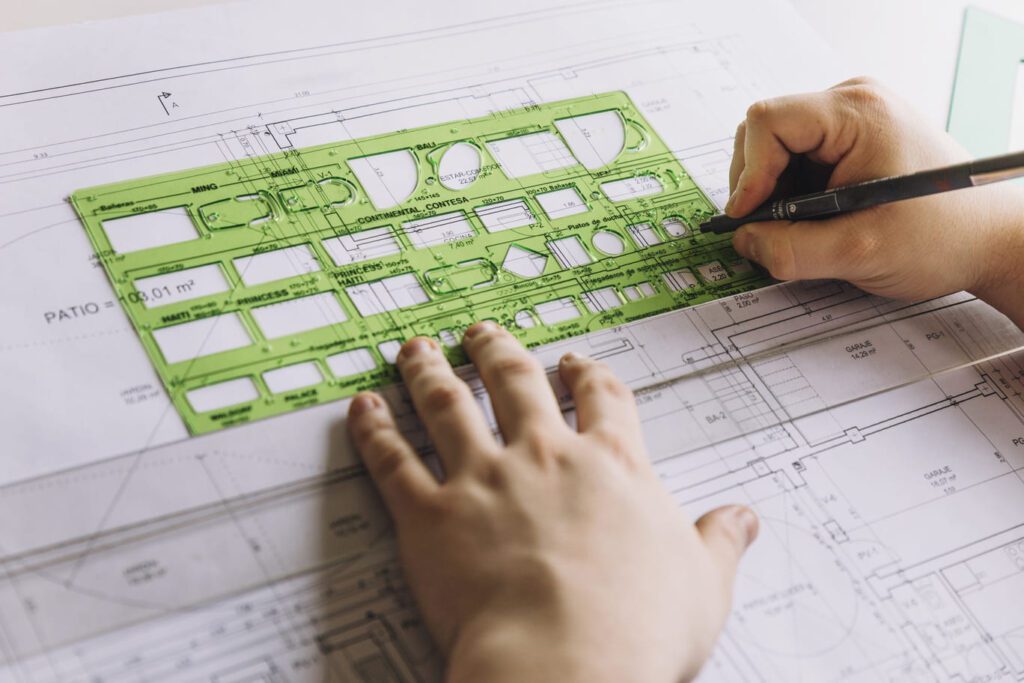
The Level of Development (LOD) is a crucial set of specifications for the architecture, engineering and construction (AEC) industry that enables professionals to clearly document, articulate and detail the BIM. Funciona como un estándar que define los niveles de desarrollo de los elementos en un modelo BIM, lo que facilita la colaboración y la ejecución rápida de proyectos.
Contenido
- 1 What is the Level of Development (LOD)?
- 2 The origin of the LOD
- 3 The 6 Levels of Development in LOD for BIM
- 4 Difference Between Level of Development (LOD) and Level of Detail (LOD)
- 5 The Importance of LOD in Construction
- 6 LOD in Design and Construction Phases
- 7 Benefits of Clarity in LOD for AEC Projects
- 8 Conclusion
What is the Level of Development (LOD)?
The Level of Development (LOD) The Level of Development (LOD) is a specification that helps designers define the level of maturity of a BIM element in terms of geometry, details, and associated data. This allows project teams to know to what extent they can rely on the information in a BIM model at each stage of the process.
Using standard LOD specifications is essential for optimizing collaboration between architects, engineers, and other professionals, ensuring that everyone is aligned regarding expectations and the level of detail in the models.
The origin of the LOD
The LOD was introduced by the American Institute of Architects (AIA) in 2008, when it established five levels of development for defining the level of detail in a BIM. Sin embargo, la idea de LOD ya existía antes, gracias a empresas como Vico Software, que vinculaban los modelos digitales con los costos de los proyectos. Desde entonces, el LOD ha evolucionado hasta incluir seis niveles, con la adición de LOD 350.
The 6 Levels of Development in LOD for BIM
There are six levels of development that cover different stages of maturity of BIM elements:
- LOD 100 – Conceptual: A symbolic graphical representation of the element with general information.
- LOD 200 – Approximate geometry: Partial definition with approximate quantities and locations.
- LOD 300 – Precise geometry: Elements defined with exact dimensions and correct locations.
- LOD 350 – Precise geometry with connections: Describes the relationship between elements.
- LOD 400 – Ready for fabrication: Elements ready for fabrication, including details and assembly information.
- LOD 500 – Operation/As-Built: The model reflects the actual conditions of the completed building.
Difference Between Level of Development (LOD) and Level of Detail (LOD)
One of the most common misconceptions is to confuse the Level of Level of Development with the Level of Detail. La diferencia clave es que el Level of Detail refers to the amount of graphical detail contained in an element in the model, while the Level of Development defines how developed the information associated with the element is, allowing its reliable use in design and construction decisions.
The Importance of LOD in Construction
Correct implementation of the different levels of development LOD in a BIM model brings significant benefits to construction projects, including:
- Better communication and collaboration: The use of standardized LOD facilitates coordination among all teams, preventing misunderstandings.
- Clarity of deliverables: Design and construction teams can clearly specify the expected level of detail and development at each project phase.
- Efficiency in execution: With a detailed model, it is easier to track execution and coordinate the production of elements such as prefabricated structures.
LOD in Design and Construction Phases
The use of LOD is not strictly tied to design phases like schematic development or detailed design. Each project may contain elements at different levels of development simultaneously, depending on the progress in each phase.
For example, in the preliminary design phase, the model could contain elements in LOD 100, LOD 200 or even LOD 300depending on the progress in each system or discipline.
Benefits of Clarity in LOD for AEC Projects
The standardization of LOD has proven to be key in reducing errors and improving communication in architecture, engineering, and construction projects. By setting clear criteria for the maturity of BIM elements, work teams can reduce discrepancies and improve accuracy in all project phases.
Conclusion
The Level of Development (LOD) at BIM not only improves clarity and coordination between teams, but also optimizes resources and facilitates efficient project execution. If you want to take full advantage of BIM models in your design and construction projects, consider implementing the appropriate development levels early in the project.
Need more information about LOD or BIM? Contact us for expert advice and find out how to integrate LOD y BIM into your construction projects.
